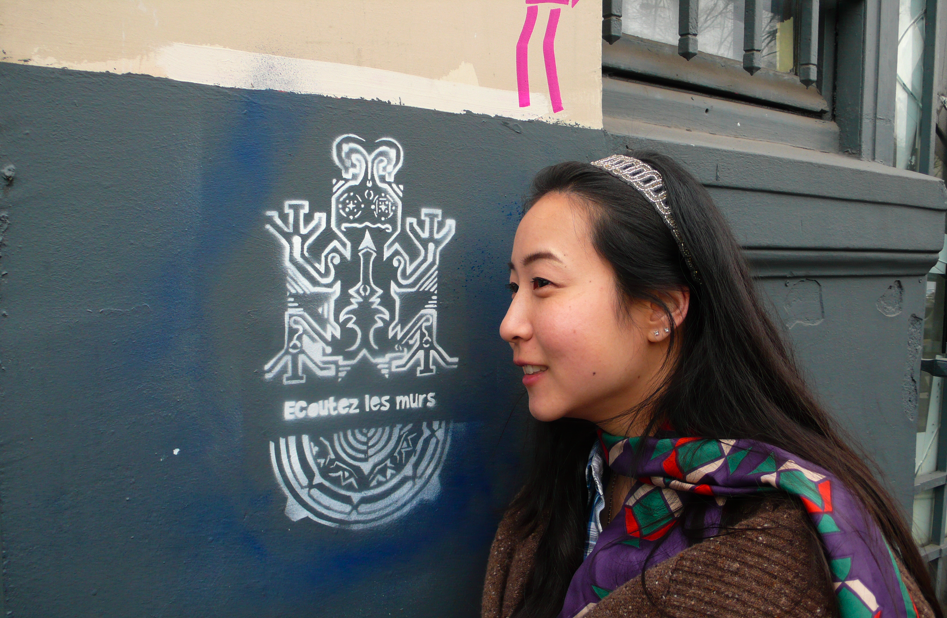“One thing that is clear is that Chicago students have unique stories to share, and that we, the adults, should be active allies in producing and facilitating their stories.”
Last week we posted this overview of the summmer 2013 Art Options program in partnership with the School of the Art Institute of Chicago. This week, the deep look at this program continues with a Q+A from teaching artist Eunsong Angela Kim, a literature PhD student at the University of California, San Diego who travels to Chicago each sumer to lead the Art Options program. Read on to hear what she has to say about helping Chicago’s youth to redefine media, make art, and make their voices heard. (And next Friday, it goes on: We’ll be featuring a Q+A with Cam Harris, a former Art Options student.)
Without further ado…
UG: How do you approach engaging Art Options students in broader discussions surrounding class, race, and gender? It seems that this is a very important element of the program.
Angela: This Art Options is a filmmaking/writing class–representation is the currency and vehicle we (Oli & I) work with. Students come into the program because they either have a million film projects they want to work on, or because they are poets and writers. Either way, they are interested in representations of their world–and come in with a vague critique that the particular representations they want to make, do not exist in Hollywood, in popular fiction and so forth. Our students come in with a sense that our current film and literature industry tends to privilege familiar western narratives and crass & simple stereotypes–so we point them to tools (readings, films, artists, poets) that can help shape their critique and craft a project that does not lean on generalizations.
This year we read Kimberle Crenshaw’s seminal text titled, “Mapping the Margins: Intersectionality, Identity Politics, and Violence Against Women of Color.” Crenshaw makes the argument for an intersectional approach to analysis–that class, race, gender cannot be categories of isolation, treated as layers on top of layers. Students such as Jesse Osaro, Marie Sommers and Justus White would reference Crenshaw’s essay during class discussions and critique sessions. They used Crenshaw’s sharp language to refine their critique. It was really amazing to watch.
What about engaging students in longer-term career possibilities in the arts? How does Art Options do this?
This is something that I’m hoping we can become better at. Most of our students are first generation college applicants, so they’re navigating the college world while trying to carve an arts practice. This year, I took some of the students to a post-production editing house, to get a feel of what a job in the art world might look like. The students who went really enjoyed the excursion–and told us that they would like more of these glimpses. But I think a long term career would require more than a glimpse–I’m really hoping that we can build relationships with nearby arts organizations and post-production houses so that students can be involved in year-long arts internships.
How is this program contributing to the development of the next generation of artists and thinkers?
That’s such a large question! One thing that is clear is that Chicago students have unique stories to share, and that we, the adults, should be active allies in producing and facilitating their stories. Barbara DeGenevieve, the Chair of the Photography at SAIC, Rob Bondgren, the Dean of Continuing Studies and Jon Cates, the chair of the Film, Video, New Media and Animation department have all been incredibly generous with their time and resources. They have insured that the program has computers to work with, space to screen in–they assist with every detail of the program. I hope that their efforts inspire other institutions to share their art spaces with students across Chicago. What would it look like if all the Universities in Chicago bubbled with summer student filmmakers? What would that kind of Chicago summer look like?
As a teaching artist, what is your hope for every Art Options student?
I hope that our Art Options students practice critical thinking, question accepted modes of representation, read the fine print and keep in touch. I hope that they know they are spectacular, have a voice in culture and that they can look to the teaching artists and staff at Urban Gateways as a continuous source of support.

And check in next week to hear from Art Options graduate Cam Harris!
